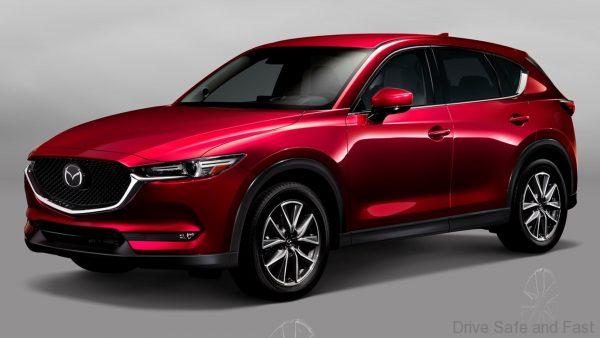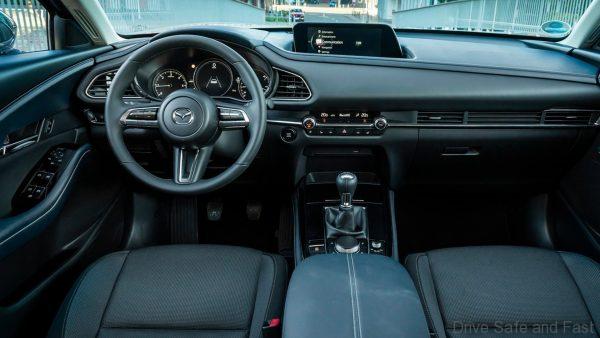Earlier this week, Mazda detailed their European specification CX-30. Bermaz’s comments during the Mazda3 launch on Wednesday indicate that the CX-30 may end being locally-assembled here instead of the 3. So let’s explore just what the CX-30 is and how it might be specced.
What is the CX-30 within Mazda?
The CX-30 breaks Mazda’s naming conventions and is understandably a difficult car to place. It sits between the CX-3 and CX-5, but isn’t named the CX-4 because that name already belongs to a Chinese-domestic market vehicle. Unlike the current CX-3 and CX-5, the CX-30 is built upon the same new-generation SkyActiv platform. In that sense, it’s better to think of the CX-30 as a crossover variant of the Mazda 3 Hatchback.
If all that was confusing, here’s a visual representation of their smaller SUVs:
Rear view




Front view




Side




Dimensions Comparison
The figures in (brackets) show you which vehicle has the highest value. (1 is highest, 4 is lowest).
Mazda CX-3
| Wheelbase | 2,570 mm (4) |
|---|---|
| Length | 4,275 mm (4) |
| Width | 1,765 mm (4) |
| Height | 1,550 mm (2) |
Mazda CX-30
| Wheelbase | 2,655 mm (3) |
|---|---|
| Length | 4,395 mm (3) |
| Width | 1,795 mm (3) |
| Height | 1,540 mm (3) |
Mazda CX-4
| Wheelbase | 2,700 mm (1) |
|---|---|
| Length | 4,633 mm (1) |
| Width | 1,840 mm (2) |
| Height | 1,530–1,535 mm (4) |
Mazda CX-5 (2nd gen)
| Wheelbase | 2,698 mm (2) |
|---|---|
| Length | 4,550 mm (2) |
| Width | 1,842 mm (1) |
| Height | 1,680 mm (1) |
As you can see, the CX-4 is a bit of an outlier that upsets the structure of Mazda’s small-to-mid sized SUVs. It has the longest wheelbase and length but its wagon-like design makes it shorter than the CX-3 and narrower than CX-5. Calling it a CX-6 (or calling the CX-3 the CX-2) may have been a better option and would have allowed the CX-30 to fit into a more comfortable place in the nomenclature.

What about pricing?
In Malaysia, here’s how the relevant Mazdas are priced:
- Mazda CX-3 – RM128k (2-litre, B-segment, CBU)
- Mazda CX-5 – RM132k-174k (2-litre, 2.5-litre, 2.2-litre diesel, C-segment, CKD)
- Mazda3 – RM139k-160k (1.5-litre, 2-litre, C-segment, CBU)
In Europe, the CX-30 is being offered with either Skyactiv-X or a mild hybrid system. These are extreme high-tech powertrains, but there’s a chance it might just come here with the standard 2-litre that we’re familiar with here. We know that European emissions regulations are forcing a lot of Japanese manufacturers to provide these more expensive engines, but we also know Malaysians prefer more proven technology. Our money is on the Skyactiv-G 2-litre, based on the fact that even the CBU Mazda3 (which is similar to the CX-30) comes with that engine.
If that’s the case, we can expect it to perhaps surplant the CX-3 and base model CX-5 in pricing.
If we’re wrong and Bermaz goes all out with Skyactiv-X here, they might push into more premium territory with CX-30 pricing as they seem to have done with the Mazda3 justified based on its look and feel.
Who are the CX-30’s competitors?
While the Mazda CX-3 (which is more closely related to the Mazda2) is often seen as a little too small to take on the Subaru XV, Honda HR-V, and Toyota C-HR, the CX-30 will have no such problem. In other markets, it goes up against the new Mitsubishi Eclipse SUV as well.

As we mentioned earlier, the CX-30 comes with some of the most high-tech powertrain options to be seen out of Japan. SkyActiv-X itself is a revolutionary new way of burning petrol, so it’s a more sophisticated and premium SUV than its peers.
